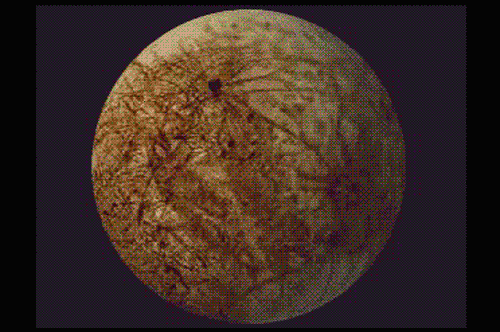Explanation: Evidence has been mounting that beneath the vast planes of ice that cover Europa lies water -- liquid oceans that might be home to alien life. The smallest of Jupiter's Galilean Moons (which include Io, Ganymede, and Callisto), Europa's deep interior is composed of mostly of silicate rock. Upon close inspection, many surface cracks stop abruptly only to continue on somewhere else -- indicating surface plates that might be sliding. The above time-lapse sequence is a composite of images taken during the Voyager spacecraft flyby of the moon twenty years ago. Not all regions are resolved in high detail. The movie shows Europa during a complete rotation, which corresponds to a complete revolution around Jupiter since Europa always keeps the same face toward the giant planet. The cause of many of the surface colors on Europa also remains a topic of research.
1999 2000 2001 2002 2003 2004 2005 2006 2007 2008 2009 2010 2011 2012 2013 2014 2015 2016 2017 2018 2019 2020 2021 2022 2023 2024 2025 |
Yanvar' Fevral' Mart Aprel' Mai Iyun' Iyul' Avgust Sentyabr' Oktyabr' Noyabr' Dekabr' |
NASA Web Site Statements, Warnings, and Disclaimers
NASA Official: Jay Norris. Specific rights apply.
A service of: LHEA at NASA / GSFC
& Michigan Tech. U.
|
Publikacii s klyuchevymi slovami:
Europa - rotation - Evropa - sputniki Yupitera - vrashenie - Jupiter's Moons
Publikacii so slovami: Europa - rotation - Evropa - sputniki Yupitera - vrashenie - Jupiter's Moons | |
Sm. takzhe:
Vse publikacii na tu zhe temu >> | |
